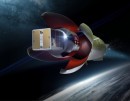Rocket Lab wants to top the success of its Electron launch vehicle, which claims the title of the second most frequently launched American rocket since 2019, with an even more innovative model, Neutron. This rocket integrates so many innovations that it’s bound to change the aerospace industry’s perspective on what rockets should be like.






In just a few years, Rocket Lab became a reputable space launch company, and its next-generation launch vehicle was designed in response to future space developments, such as frequent deployments of satellite constellations, which have different requirements compared to single satellites. During a recent live event, the company’s founder and CEO, Peter Beck, explained what makes Neutron unique in terms of architecture, materials, and propulsion.First of all, Neutron will be made of carbon composite, which is an industry-first for a rocket this size. This newly-formulated material is said to be lightweight, but also capable of withstanding the extreme temperature and force associated with launch and re-entry. Neutron will also be able to stand on its own feet, without any conventional launch site infrastructure, thanks to its unique tapered shape. This already eliminates a lot of the costs associated with lift-off, but there’s more.Neutron is meant to be reusable. First of all, unlike conventional rockets, where the fairing is dropped into the ocean, after the release of the second stage, Neutron integrates a special fairing that stays connected to the rocket’s first stage. Aptly-called “Hungry Hippo,” the fairing releases the second stage and the payload, and then simply closes back. This way, the first stage returns to Earth with the fairing ready to receive a new second stage. Also, thanks to the innovative architecture, Neutron’s first stage returns to the launch site, bypassing the traditional ocean landings that bring additional costs.An innovative rocket deserves an innovative engine. Also designed in-house, Archimedes is a reusable, liquid oxygen/methane gas engine with a one-meganewton thrust. The future rocket will be powered by seven Archimedes. Because this is a lightweight composite vehicle, it doesn’t require complex engines like conventional models, which means that the Archimede is easier to develop and test.At the moment, Rocket Lab is researching the best spots for its rocketproduction facility and Archimedes engine test facility, on the U.S. East Coast, where Neutron is set to write history.